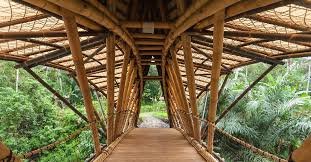The Rise of Eco-Friendly Building Materials
In recent years, there has been a growing trend towards using eco-friendly building materials in construction projects. This shift is driven by the increasing awareness of environmental issues and the need to reduce our carbon footprint. Eco-friendly building materials offer a sustainable alternative to traditional materials, helping to create healthier and more energy-efficient buildings.
Benefits of Eco-Friendly Building Materials:
- Reduced Environmental Impact: Eco-friendly building materials are typically sourced from renewable or recycled sources, reducing the depletion of natural resources and minimising waste.
- Energy Efficiency: Many eco-friendly materials have superior insulating properties, helping to reduce energy consumption for heating and cooling.
- Improved Indoor Air Quality: Some eco-friendly materials are low in volatile organic compounds (VOCs), improving indoor air quality and creating healthier living spaces.
- Durability: Eco-friendly materials are often durable and long-lasting, reducing the need for frequent replacements and maintenance.
Popular Eco-Friendly Building Materials:
There is a wide range of eco-friendly building materials available on the market today. Some popular choices include:
- Bamboo: Bamboo is a rapidly renewable resource that can be used for flooring, furniture, and structural elements.
- Recycled Steel: Recycled steel is a sustainable alternative to traditional steel for structural components in buildings.
- Cork: Cork is a versatile material that can be used for flooring, wall coverings, and insulation due to its natural insulating properties.
- Rammed Earth: Rammed earth construction involves compacting earth into solid walls, providing excellent thermal mass properties for energy efficiency.
The Future of Sustainable Construction:
The use of eco-friendly building materials is expected to continue growing as architects, builders, and consumers increasingly prioritise sustainability in construction projects. By choosing eco-friendly materials, we can reduce our impact on the environment while creating healthier and more efficient buildings for future generations to enjoy.
7 Essential Tips for Choosing Eco-Friendly Building Materials
- Choose materials that are sourced sustainably
- Opt for natural and renewable materials like bamboo or cork
- Use recycled or upcycled materials whenever possible
- Select non-toxic and low VOC (volatile organic compound) products
- Prioritize energy-efficient materials such as insulated glass or recycled insulation
- Consider the durability and longevity of the materials to reduce waste over time
- Explore options for locally sourced materials to reduce carbon footprint from transportation
Choose materials that are sourced sustainably
When selecting eco-friendly building materials, it is crucial to choose those that are sourced sustainably. Opting for materials sourced sustainably means prioritising resources that are harvested or manufactured in a manner that minimises environmental impact and promotes long-term viability. By selecting such materials, builders can contribute to the preservation of natural ecosystems and help build a more sustainable future for generations to come.
Opt for natural and renewable materials like bamboo or cork
When considering eco-friendly building materials, opting for natural and renewable options such as bamboo or cork can significantly reduce the environmental impact of construction projects. Bamboo, a rapidly renewable resource, is versatile and can be used for various applications like flooring and structural elements. Cork, known for its natural insulating properties, is a sustainable choice for flooring, wall coverings, and insulation. By choosing these materials, not only are we promoting sustainability but also contributing to creating healthier and more energy-efficient buildings for a greener future.
Use recycled or upcycled materials whenever possible
Using recycled or upcycled materials whenever possible is a key tip for promoting eco-friendly building practices. By giving new life to materials that would otherwise end up in landfills, we not only reduce waste but also minimise the demand for new resources. Recycled or upcycled materials can add unique character and charm to a building while contributing to a more sustainable construction industry. Embracing these materials showcases a commitment to environmental responsibility and helps create buildings that are both aesthetically pleasing and environmentally conscious.
Select non-toxic and low VOC (volatile organic compound) products
When choosing eco-friendly building materials, it is essential to opt for non-toxic and low VOC (volatile organic compound) products. These materials contribute to better indoor air quality by reducing harmful emissions that can affect human health and the environment. Selecting non-toxic and low VOC products not only ensures a healthier living or working environment but also promotes sustainability in construction practices.
Prioritize energy-efficient materials such as insulated glass or recycled insulation
When embarking on a construction project with sustainability in mind, it is crucial to prioritise the use of energy-efficient materials. Opting for insulated glass or recycled insulation can significantly enhance the energy performance of a building. Insulated glass helps to minimise heat loss and reduce the need for excessive heating or cooling, ultimately lowering energy consumption. Similarly, recycled insulation not only repurposes materials that would otherwise end up in landfills but also provides effective thermal resistance, contributing to a more environmentally friendly and energy-efficient structure. By incorporating these eco-friendly building materials, we can take a significant step towards creating greener and more sustainable buildings for the future.
Consider the durability and longevity of the materials to reduce waste over time
When selecting eco-friendly building materials, it is crucial to consider the durability and longevity of the materials to minimise waste over time. Opting for materials that are long-lasting and resilient can significantly reduce the need for frequent replacements or repairs, thereby decreasing the overall environmental impact of a building project. By prioritising durability, builders can contribute to sustainable construction practices and promote a more efficient use of resources in the long run.
Explore options for locally sourced materials to reduce carbon footprint from transportation
When considering eco-friendly building materials, exploring options for locally sourced materials can significantly reduce the carbon footprint associated with transportation. By sourcing materials from nearby suppliers, construction projects can minimise the energy and emissions generated during transportation. This approach not only supports local economies but also contributes to a more sustainable building process by reducing the environmental impact of material sourcing and delivery.

